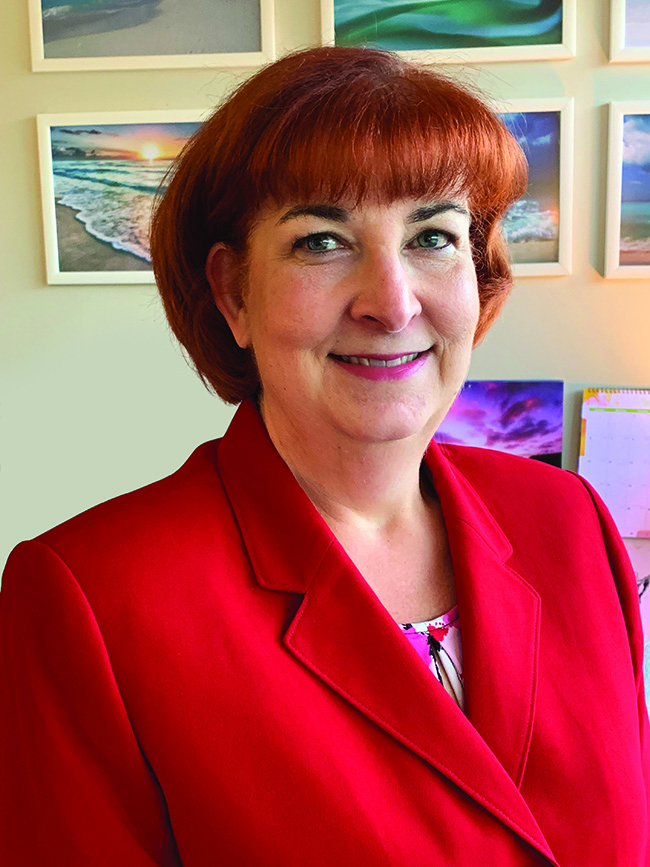
By Laurie A. Shuster
On the morning of Sept. 11, 2001, the staff of Civil Engineering arrived at ASCE’s headquarters in Reston, Virginia, ready to start work on a new issue. Just the day before, we had completed the October 2001 issue, and we were excited to learn what readers would think of the cover, which was a departure for the publication.
Typically if our cover story features a skyscraper, for example, the image on the cover will be of that skyscraper. But in this case, we were featuring Goldman Sachs’s new office tower in New Jersey, designed and sited specifically so that employees would have breathtaking views through its vast column-free spaces of the World Trade Center across the river in New York City. So our cover featured not the exterior of the new building, but a vista of the iconic twin towers as seen through the floor-to-ceiling glass of one of the offices. It was nice to be able to feature one of the great accomplishments of civil and structural engineering in the past several decades.
So we thought.
None of us could have predicted what happened next. As soon as the first plane hit the north tower, our then-editor in chief, Anne Powell, called to stop the printing press. While she and the art director went back to the drawing board to design a new cover, I went to my keyboard to rewrite the introduction to the feature. The south tower fell as I was writing; I could hear the gasps from my colleagues, who were watching on a small black and white television someone had brought in from home. What, I wondered, would the Goldman Sachs employees see from their office windows now?
When the first plane struck the north tower, we could imagine that the event was an accident; when the second plane struck the south tower, there was no question that the country was under attack. When word came that a plane had struck the Pentagon, fear grew. If they — whoever “they” were — could destroy even part of the Pentagon, they could strike anywhere. They could destroy anything.
As the disastrous events of that day unfolded, ASCE acted quickly, assembling teams to investigate the performance of the structures. Members of ASCE and other organizations quickly volunteered to go to the disaster sites to help. Civil engineers worked to evaluate the stability of the debris field in New York, for example, before first responders could move forward with what was, at first, a search and rescue mission, and became, tragically, a recovery mission.
Staff members, including myself, quickly began reporting on the actions of ASCE and civil engineers broadly in order to contribute to a feature article that Powell would write and publish in the November issue, titled “September Eleventh: The Days After, the Days Ahead.” I will never forget the anguish in the voices of the engineers I interviewed, often in the evenings after they had worked more than a full day at the site. They, like the first responders — and indeed the rest of the world — wanted badly to witness the discovery of survivors in the rubble. As it became increasingly clear that that wasn’t going to happen, their sorrow became evident in the tenor of their voices.
In this issue we present a special section commemorating the 20th anniversary of the events of Sept. 11, including sections devoted to the investigations by civil engineers and other experts that determined how the structures performed in response to the loss of structural supports and the conflagrations fueled by the jets; the impact that those events and investigations have had on the civil and structural engineering professions in the intervening 20 years; and the towers, museums, subway station, memorials, and stronger Pentagon that rose from the ashes. We end with a personal remembrance of the accomplishments of the late designers of the twin towers — John Skilling, P.E., Dist.M.ASCE, and Leslie E. “Les” Robertson, P.E., S.E., Dist.M.ASCE — by Jon D. Magnusson, P.E., S.E., F.SEI, NAE, Dist.M.ASCE, who knew and worked closely with these distinguished engineers.
We’d like to read about your memories of that day. Visit source.asce.org/cemagazine and navigate to the September/October issue to leave your comments after any of the articles in this special section.
Laurie A. Shuster is the editor in chief of Civil Engineering.
This article first appeared in the September/October 2021 issue of Civil Engineering.



